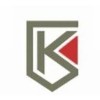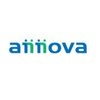Filter interviews by
Gallagher & Mohan Financial Analyst Interview Questions and Answers
6 Interview questions
Levered beta includes the impact of debt on a company's risk, while unlevered beta does not consider the effects of debt.
Levered beta reflects the risk of a company with debt, while unlevered beta shows the risk without debt.
Levered beta is calculated using the company's beta and its debt-to-equity ratio, while unlevered beta is calculated using only the company's beta.
Levered beta is more relevant for companies w...
Cap rate, or capitalization rate, is a measure used to evaluate the potential return on investment for a real estate property.
Cap rate is calculated by dividing the property's net operating income (NOI) by its current market value.
It is expressed as a percentage and is used by investors to compare different investment opportunities.
A higher cap rate indicates a higher potential return, but may also come with highe...
WACC stands for Weighted Average Cost of Capital and is used to determine the minimum return a company must earn on their investments to satisfy their shareholders and debt holders.
WACC is calculated by taking the weighted average of the cost of equity and the cost of debt, with each component weighted by its respective proportion in the company's capital structure.
In Real Estate, WACC is used to evaluate the feas...
Cash on cash returns are calculated by dividing the annual pre-tax cash flow by the initial investment.
Calculate the annual pre-tax cash flow from the investment property.
Divide the annual pre-tax cash flow by the initial investment amount.
Express the result as a percentage to get the cash on cash return.
Formula: Cash on Cash Return = (Annual Pre-tax Cash Flow / Initial Investment) * 100%
I would prefer a lower cap rate as it indicates higher potential returns on investment.
Lower cap rate implies higher potential returns on investment
Higher cap rate may indicate higher risk or lower potential returns
Investors typically prefer lower cap rates for safer investments
Example: A cap rate of 5% may be preferred over a cap rate of 10%
Calculating IRR for a word problem
Identify the initial investment and cash flows over time
Use a financial calculator or Excel to calculate the IRR
IRR is the discount rate that makes the net present value of all cash flows equal to zero
Gallagher & Mohan Financial Analyst Interview Experiences
4 interviews found
I appeared for an interview in Aug 2024.
They will provide you with several multiple-choice questions regarding finance.
They provide one case study related to real estate that you need to solve.
(7 Questions)
- Q1. What is cap rate.
- Ans.
Cap rate, or capitalization rate, is a measure used to evaluate the potential return on investment for a real estate property.
Cap rate is calculated by dividing the property's net operating income (NOI) by its current market value.
It is expressed as a percentage and is used by investors to compare different investment opportunities.
A higher cap rate indicates a higher potential return, but may also come with higher ris...
- Q2. What is levered and unlevered beta
- Ans.
Levered beta includes the impact of debt on a company's risk, while unlevered beta does not consider the effects of debt.
Levered beta reflects the risk of a company with debt, while unlevered beta shows the risk without debt.
Levered beta is calculated using the company's beta and its debt-to-equity ratio, while unlevered beta is calculated using only the company's beta.
Levered beta is more relevant for companies with s...
- Q3. WACC
- Q4. IRR
- Q5. Hurdle rate
- Q6. NPV
- Q7. After the interview questions, you will need to complete an Excel exam that requires the use of various Excel functions such as SUMIF, SUMIFS, COUNTIF, and COUNTIFS?
I applied via LinkedIn and was interviewed in Jun 2024. There were 3 interview rounds.
(2 Questions)
- Q1. What is WACC and how is it used in Real Estate?
- Ans.
WACC stands for Weighted Average Cost of Capital and is used to determine the minimum return a company must earn on their investments to satisfy their shareholders and debt holders.
WACC is calculated by taking the weighted average of the cost of equity and the cost of debt, with each component weighted by its respective proportion in the company's capital structure.
In Real Estate, WACC is used to evaluate the feasibili...
- Q2. A word problem where you had to calculate IRR
- Ans.
Calculating IRR for a word problem
Identify the initial investment and cash flows over time
Use a financial calculator or Excel to calculate the IRR
IRR is the discount rate that makes the net present value of all cash flows equal to zero
I was given a set of assumptions on the basis of which I had to create a DCF model on real estate. It included topics like NNN lease, and I had to find the IRR of the project, the projected profit, Equity multiple and earnings.
(2 Questions)
- Q1. How do you calculate Cash on cash returns?
- Ans.
Cash on cash returns are calculated by dividing the annual pre-tax cash flow by the initial investment.
Calculate the annual pre-tax cash flow from the investment property.
Divide the annual pre-tax cash flow by the initial investment amount.
Express the result as a percentage to get the cash on cash return.
Formula: Cash on Cash Return = (Annual Pre-tax Cash Flow / Initial Investment) * 100%
- Q2. Would you prefer a lower or a higher cap rate and why
- Ans.
I would prefer a lower cap rate as it indicates higher potential returns on investment.
Lower cap rate implies higher potential returns on investment
Higher cap rate may indicate higher risk or lower potential returns
Investors typically prefer lower cap rates for safer investments
Example: A cap rate of 5% may be preferred over a cap rate of 10%
Interview Preparation Tips
My advice would be to thoroughly look into the technicalities in the real estate industry. Its completely US time zone so expect your working hours to be adjusted according to that. Negotiated salary wasnt much, but it was decent enough for a remote job.
I appeared for an interview in Dec 2024, where I was asked the following questions.
- Q1. Basic Real estate question
- Q2. Financial modeling Question
- Q3. Real estate Asset class
Interview Preparation Tips
I appeared for an interview before Aug 2023.
Basic real estate related questions
(2 Questions)
- Q1. What is cap rate
- Ans.
Cap rate, or capitalization rate, is a measure used to evaluate the potential return on investment for a real estate property.
Cap rate is calculated by dividing the property's net operating income (NOI) by its current market value.
It is expressed as a percentage and is used by investors to compare different investment opportunities.
A higher cap rate indicates a higher potential return, but may also come with higher ris...
- Q2. What is unlevered & levered irr
- Ans.
Unlevered IRR is the internal rate of return without considering debt, while levered IRR includes the impact of debt.
Unlevered IRR is the return on an investment without taking into account the effects of debt financing.
Levered IRR is the return on an investment that includes the impact of debt financing.
Unlevered IRR is used to evaluate the return on an investment solely based on its own merits, while levered IRR cons...
Top trending discussions






Interview questions from similar companies

I applied via Approached by Company and was interviewed before Jun 2023. There were 2 interview rounds.
I was given an assessment to solve based on data
(1 Question)
- Q1. Structured Questions were asked
Interview Preparation Tips
- Advanced Excel
- Microsoft Power Point
I applied via Naukri.com and was interviewed in Sep 2023. There were 4 interview rounds.

(2 Questions)
- Q1. Based on Resume
- Q2. Domain Questions
(1 Question)
- Q1. Based in resume
(3 Questions)
- Q1. Project management
- Q2. Business Analysis
- Q3. BFSI domain related questions
Interview Preparation Tips
Stick to basics

I applied via Referral and was interviewed before Aug 2022. There were 3 interview rounds.

It was more about soft skills based on your work experience
(1 Question)
- Q1. Team interview - job responsibilites and work exp
Interview Preparation Tips

I applied via Campus Placement and was interviewed before Sep 2022. There were 2 interview rounds.

(2 Questions)
- Q1. Research related questions , graphical representation of data and case study related question
- Q2. They had conducted a test so asked how did you arrive at the solution
- Ans.
I analyzed the data systematically, applying statistical methods to derive insights and validate the results.
Identified the problem statement clearly to focus the analysis.
Collected relevant data from reliable sources, ensuring its accuracy.
Applied statistical techniques, such as regression analysis, to interpret the data.
Conducted a thorough review of the results, comparing them with existing literature.
Collaborated w...
Interview Preparation Tips

I applied via LinkedIn and was interviewed in Jun 2024. There was 1 interview round.
(1 Question)
- Q1. Types of research, qualitative and quantitative?
- Ans.
Qualitative research explores subjective experiences, while quantitative research focuses on numerical data and statistical analysis.
Qualitative research involves interviews, focus groups, and observations to gather in-depth insights.
Quantitative research uses surveys, experiments, and statistical analysis to quantify data and identify patterns.
Example of qualitative: Conducting interviews to understand patient experie...

I appeared for an interview before Mar 2024, where I was asked the following questions.
- Q1. Tell me about yourself?
- Q2. What is your job experience?
- Ans.
I have over 7 years of experience in data analysis, focusing on financial modeling and strategic insights for business growth.
Led a team of analysts to develop a predictive model that increased sales forecasting accuracy by 20%.
Conducted market research that identified new customer segments, resulting in a 15% increase in market share.
Utilized advanced Excel and SQL skills to streamline data processing, reducing report...
Interview Preparation Tips
Gallagher & Mohan Interview FAQs
Tell us how to improve this page.
Gallagher & Mohan Interviews By Designations
- Gallagher & Mohan Financial Analyst Interview Questions
- Gallagher & Mohan Senior Accountant Interview Questions
- Gallagher & Mohan Junior Financial Analyst Interview Questions
- Gallagher & Mohan Accountant Interview Questions
- Gallagher & Mohan Lease Analyst Interview Questions
- Gallagher & Mohan Senior Associate Interview Questions
- Gallagher & Mohan Accounting Staff Interview Questions
- Gallagher & Mohan Market Research Analyst Interview Questions
- Show more
Interview Questions for Popular Designations
Overall Interview Experience Rating
based on 5 interview experiences
Difficulty level
Duration
Interview Questions from Similar Companies
Gallagher & Mohan Financial Analyst Reviews and Ratings
based on 10 reviews
Rating in categories
|
Financial Analyst
128
salaries
| ₹4 L/yr - ₹8.9 L/yr |
|
Accountant
53
salaries
| ₹4.1 L/yr - ₹7.5 L/yr |
|
Senior Accountant
25
salaries
| ₹4.1 L/yr - ₹8.6 L/yr |
|
Graphic Designer
13
salaries
| ₹11.7 L/yr - ₹16 L/yr |
|
Analyst
12
salaries
| ₹3.7 L/yr - ₹9 L/yr |

Baroda Global Shared Services

FinThrive

Annova Solutions

Value Rcm Solutions
- Home >
- Interviews >
- Gallagher & Mohan Interview Questions










